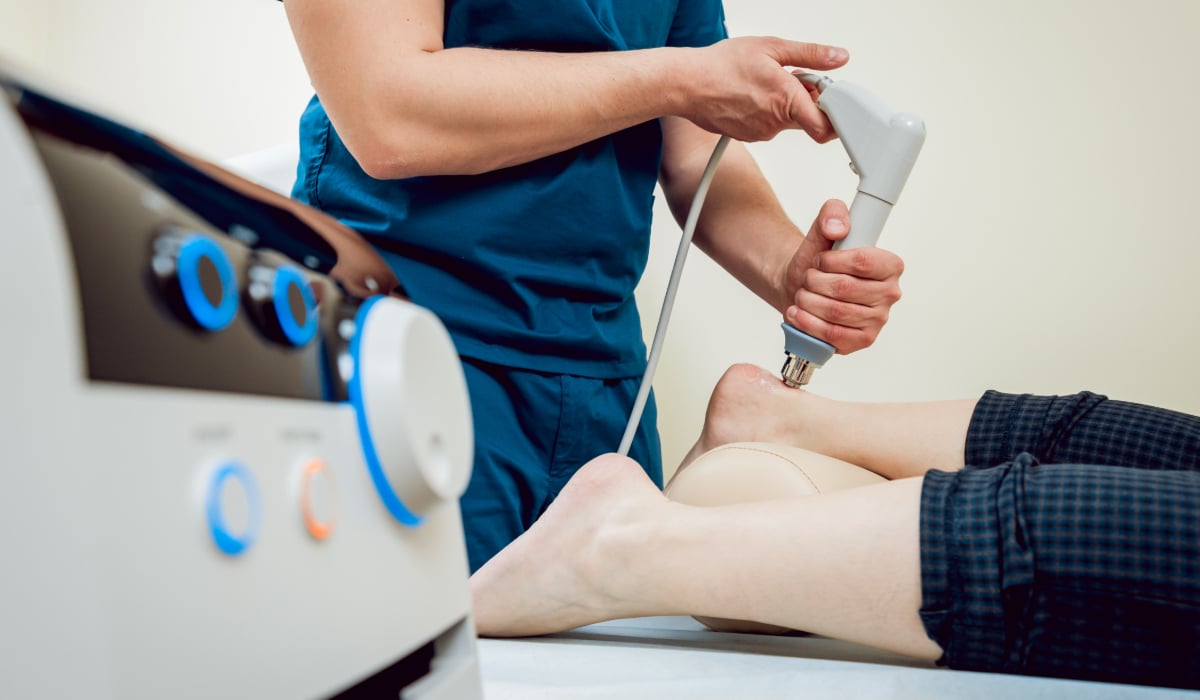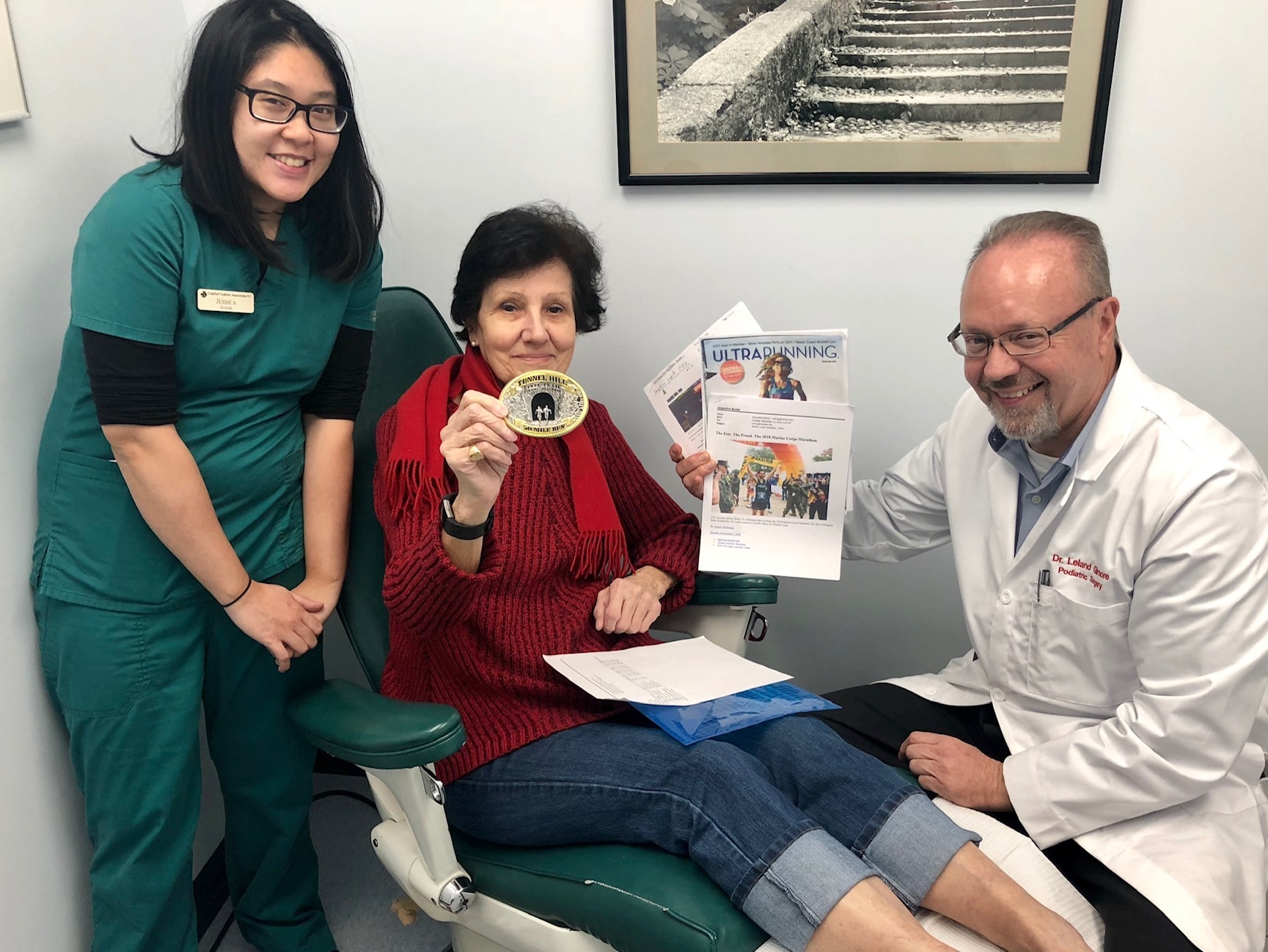Procedures
Whenever a patient comes into Capital Podiatry Associates, our goal is to identify their cause of discomfort and provide the best forms of treatment that meet their individual needs.
Sometimes, this takes the form of time-honored techniques such as rest, stretching, and simple procedures such as ingrown toenail removal. There’s a reason these methods have lasted so long, after all!
Other times, however, more advanced forms of treatment might be recommended. We have cutting edge technology that can address multiple issues, helping to relieve pain, accelerate healing, reach an area of need with pinpoint accuracy, and more.
We are always reviewing new forms of treatment for their potential to help our patients. Here are some of the advanced tools and forms of treatment we currently use.
Laser Treatment for
Pain and Neuropathy
Capital Podiatry Associates uses the Multi-Wave Locked System (MLS) of laser therapy for many cases when a need for pain relief, inflammation relief, or accelerated healing is seen.
Although the laser part might seem quite space age, its strength truly lies in its ability to stimulate the natural healing processes of the body. The light energy from the MLS is set to very specific frequencies that penetrate into the site of an injury. This encourages cells to increase their repair activities, while simultaneously stimulating increased blood flow, supplying more essential nutrients and oxygen to the area.
Many patients start to feel results after a few MLS therapy sessions, with a schedule of 7-10 total sessions usually typical. The procedure involves no medications or pain, and you can go right on with your day afterward.
We often recommend MLS for our neuropathy patients, to help relieve nerve pain, slow degeneration, and in some cases even encourage healing of the nerves. This process can also be effective for plantar fasciitis, joint pain, tendinitis, and post-operative pain.
Ultrasound
Our ultrasound technology has both diagnostic and therapeutic uses.
Diagnostically, an ultrasound can provide a clear image of the source of a foot or ankle issue. This not only provides valuable information for a diagnosis, it can also ensure treatments such as injections hit their mark and are used most effectively.
Therapeutically, ultrasound uses sound waves—at about 1 million vibrations per second—to increase bloodflow and reduce swelling to the site of a soft tissue injury. Some tissue cleaning may also be performed. A session is usually about 8 minutes.
X-Ray
For cases of suspected fracture or other internal injury, you don’t have to schedule an imaging session elsewhere. We provide digital X-rays right in our office, with results available for our and your viewing just minutes later.
“TENS” for Diabetic Neuropathy
The primary goals of heel pain treatment are to take care of symptoms, accelerate healing when necessary, and prevent conditions that can cause heel pain from coming back.
For pain treatment and healing of soft tissue injuries, laser treatment can be a very effective tool. This form of treatment uses specific wavelengths of light energy to penetrate the site of an injury and stimulate the repair activities of cells. Heel pain this is a result of sports injuries can benefit in particular from laser.
If the source of your heel pain stems from an abnormality in your gait or foot structure, we may recommend the use of custom orthotic inserts. These devices would be specially made to match the specific needs of your feet, providing support and offloading excess pressure from areas that are causing stress and pain.
Additional forms of treatment may be recommended on a case-by-case basis. Conservative measures will always be considered before surgery, and surgical procedures are very rarely ever needed—only if conservative measures don’t provide the relief that is needed.
Massage Gun Therapy
Massage gun therapy is a simple and fast way to get the benefits of a deep tissue massage, focused directly on a precise area where pain and tension are severe.
The “gun” is a handheld device that uses an oscillating head to deliver percussive therapy to damaged tissues. This leads to several positive effects, including increased local blood flow, break-up of scar tissue, and relief from chronic pain and soreness. It can even help accelerate your body’s natural healing processes.
Massage gun therapy may be recommended for plantar fasciitis, arch pain, and other sources of chronic foot and lower leg pain.
Take the First Step
Contact Capital Podiatry
These are not our only forms of treatment, and our doctors will always work with you to determine the best options to get you the results you need.
To take the first steps toward effective treatment, call our Alexandria office at (703) 560-3773.

